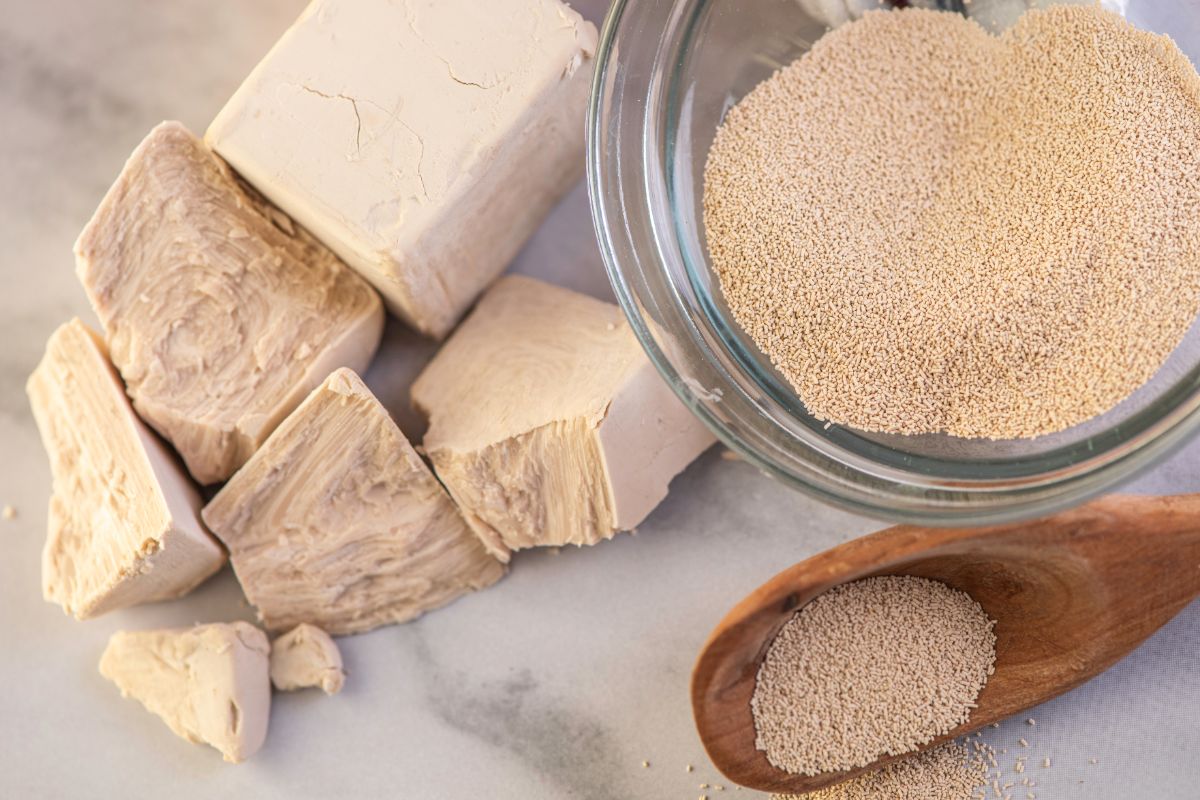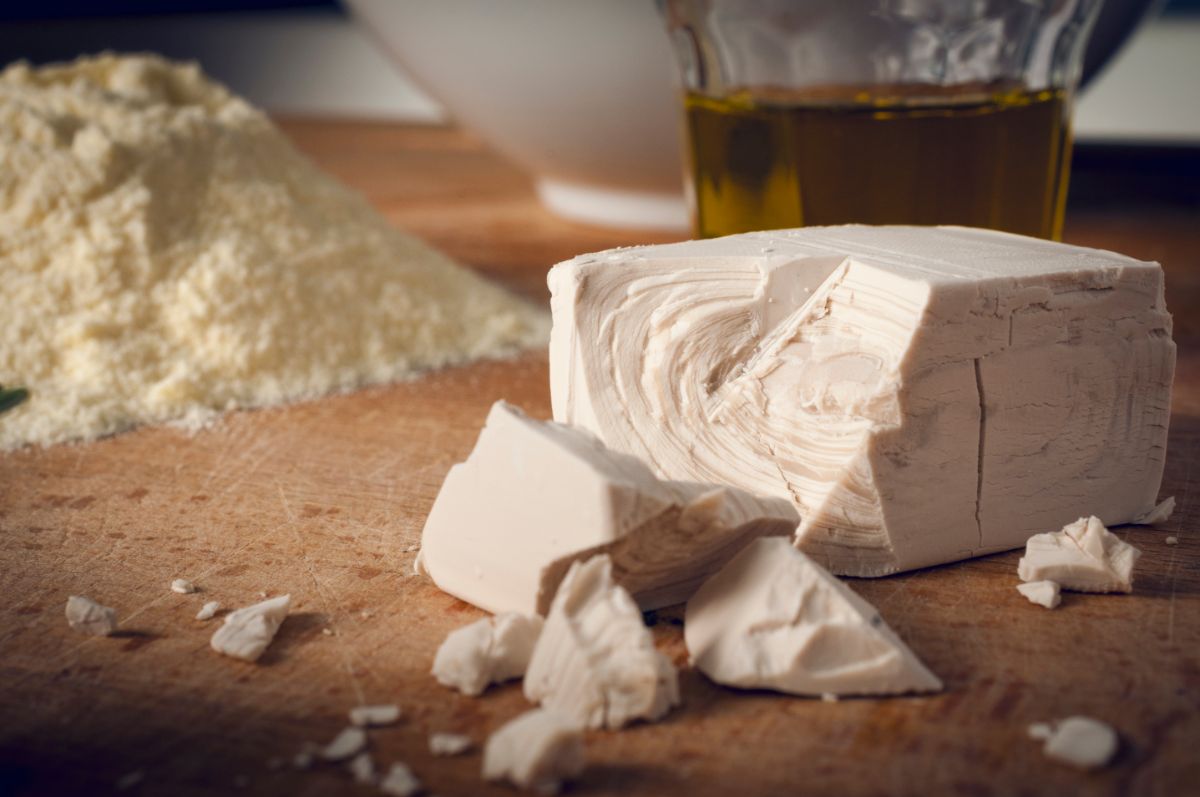There is nothing more disappointing than preparing dough for bread as you anticipate having that first warm slice, only to realize your yeast has gone bad.

Yeast can be a challenging ingredient to work with, but it can also be checked to ensure it doesn’t ruin your bread project.
How Can You Tell If Yeast Has Gone Bad?
A person generally buys yeast in quantity larger than they will use in one batch of bread baking. The unused portion has to be stored correctly, or it will go bad and be un-usable the next time you go to use it. Yeast can be purchased in a dry package or a jar as fresh yeast. If you bought the jar form and placed it in your refrigerator more than two weeks ago, how do you know if it can still be used?
It is not common for the yeast to go bad in the traditional sense by growing mold and to become unsafe to eat. Yeast goes bad when it is no longer active as a leavening agent in your bread. If a yeast will not allow your dough to rise and become fluffy and soft, then it is of no use- it is bad. There are ways to test your yeast to know if it is still active and ready to make a great loaf of bread. There are also ways of storing unused yeast to make sure it is ready the next time you are prepared to bake.
Storing Yeast So It Doesn’t Go Bad
There are two kinds of yeast available for you to choose from on the market. You can select a dry form or a fresh form of yeast to use in baking bread or other baked products. Dry yeast will last longer, and some claim it makes a better quality of dough, though this may be a personal preference.
Dry yeast is comprised of a bunch of granules that are in a dormant state. They are waiting to be activated either by moisture, heat, or air. Because these three conditions can cause active dry yeast, you must store it tightly sealed in a dry, cool room. Room temperature or slightly below is perfect for storage. Do not place a package of yeast in a cupboard above your stove as this area would be too warm.

If you place an opened package of yeast into the refrigerator to store, it should be tightly sealed. This product is highly perishable when it is exposed to any amount of heat, moisture, or air even if in your freezer or refrigerator. Place the opened package of yeast into a sealable bag or tightly roll down the top until you reach the yeast level. Once folded down, secure the closure with a clip.
Your fresh yeast is found in the refrigerator section and should be stored in your refrigerator. Cut off only the amount called for in your recipe and return the remaining to the fridge.
How Long Can You Store Yeast Before it Goes Bad?
Dry yeast will have a ‘best by’ date stamped on the packet. This product can go well beyond this date, but it is not a guarantee. Usually, an unopened pack of yeast will remain effective up to and beyond the date stamped on its packaging. For most packages, it will continue to be effective up to four months beyond that date in the refrigerator and up to six months past that date if stored in the freezer.
If the package has been opened, the yeast should remain effective up to four months after you placed it in the refrigerator or up to six months after you’ve put it in the freezer. These times are not a guarantee, and before you ruin a batch of dough, you should test the yeast before adding it to your bread project.
Fresh yeast is a living organism that will stay active from two to three weeks after it was produced. There will be a ‘best by’ on this packaging as it is on the dry packet, and you should not expect it to last much longer than that date. It could also become ineffective for making bread before this date as well. These are the best practices to follow in determining how long to keep yeast, so it doesn’t go bad:
Unopened dry yeast can be kept in the pantry until its ‘best by’ date
Active dry yeast opened can stay in the refrigerator up to four months after being placed inside and up to six months in the freezer
Fresh yeast should be kept in the fridge and used by or before its ‘best by’ date
How to Know Your Yeast Has Gone Bad
When yeast goes bad, it will resemble other dry ingredient products. Much like flour, yeast will begin clumping together and forming solid chunks. You may notice signs of water in the packet or organic growth. Fresh yeast will become discolored, start to dry out, and show signs of mold growth.
If you see any of these signs of age in your yeast, you should throw it away immediately and purchase a new, fresh batch. The problem with visually looking at your yeast to determine if it is good or bad will not always work. Yeast can smell and look perfectly normal and still not be useful for you to use in baking bread. Before using yeast that has been stored, you should proof it first.
How to Proof Yeast to Determine If Bad or Not
Proofing yeast is checking it to see if it is effective and will work in your bread project. Proofing is a way of testing either dry or fresh yeast to know that it will work as a leavening agent in your dough.
Dry yeast proofing consists of using a ¼ cup of water at 105 to 115 degrees Fahrenheit with one teaspoon of sugar. Mix the sugar in well to dissolve, then add the packet of yeast. Mix this in well also and let the mixture sit for about ten minutes. If it begins to foam, you know it has not gone bad and is ready for your bread. If it does not foam, you need to throw it away and get new yeast.
Fresh yeast proofing begins with a half cup of water at 90 to 100 degrees Fahrenheit with one teaspoon of sugar dissolved in it. You add the cake yeast to this mixture and allow it to sit for about ten minutes. The results are the same as with dry; if it foams it can be used in your bread, if not, throw it away and buy new yeast.
